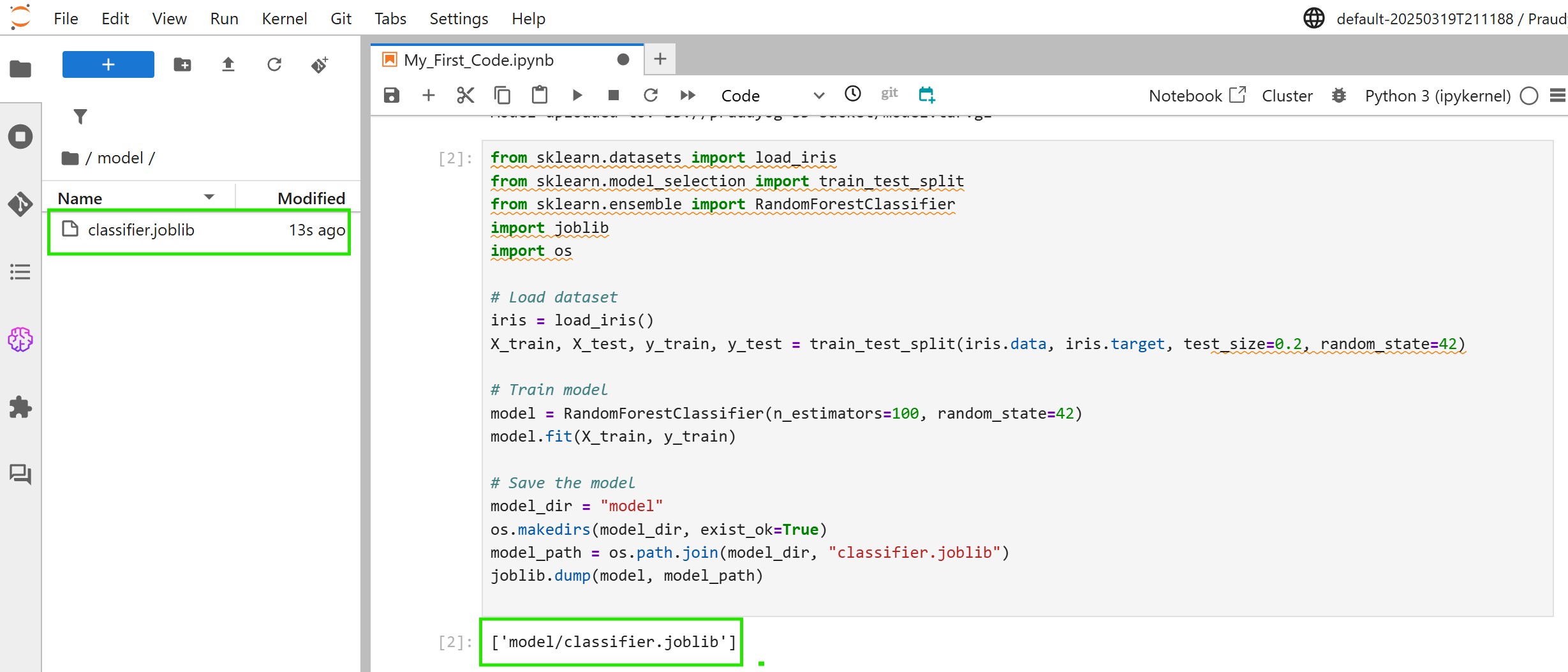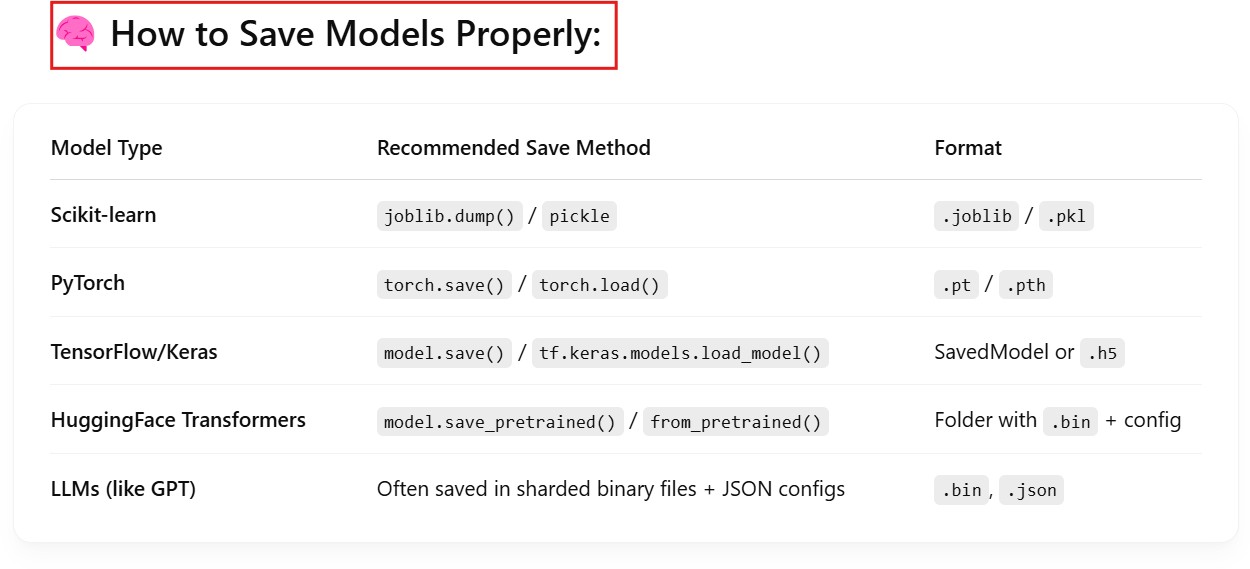AWS – How To Deploy ML Model Using Sagemaker Endpoint Using Prebuild Container?
Table Of Contents:
- Setup AWS & Install Dependencies.
- Train & Save The Model.
- Create A Docker Container.
- Push The Docker Image To Amazon ECR.
- Deploy The Model To Sagemaker Endpoint.
- Make Prediction Using Endpoint
- Cleanup The Resources.
(1) Setup AWS & Install Dependencies.
AWS Dependencies:
- Ensure You Have The The Following Dependencies Installed.
An AWS account with SageMaker and ECR permissions.
Docker installed (
docker – version).AWS CLI configured (
aws configure).Boto3 and SageMaker SDK installed.

Python Libraries:
- Python libraries to build the model.
pip install boto3 sagemaker scikit-learn pandas numpy flask gunicorn
(2) Train & Save The Model.
- For this example, we’ll use the Iris dataset to train a basic classifier.
from sklearn.datasets import load_iris
from sklearn.model_selection import train_test_split
from sklearn.ensemble import RandomForestClassifier
import joblib
import os
# Load dataset
iris = load_iris()
X_train, X_test, y_train, y_test = train_test_split(iris.data, iris.target, test_size=0.2, random_state=42)
# Train model
model = RandomForestClassifier(n_estimators=100, random_state=42)
model.fit(X_train, y_train)
# Save the model
model_dir = "model"
os.makedirs(model_dir, exist_ok=True)
model_path = os.path.join(model_dir, "classifier.joblib")
joblib.dump(model, model_path)


(3) Create Inference.py File
import joblib
import os
import numpy as np
from flask import Flask, request, jsonify
# Create Flask app
app = Flask(__name__)
# Define model path inside the container
MODEL_PATH = "/opt/ml/model/classifier.joblib"
# Load the model when the container starts
def load_model():
global model
if os.path.exists(MODEL_PATH):
model = joblib.load(MODEL_PATH)
else:
raise FileNotFoundError(f"Model file not found at {MODEL_PATH}")
load_model() # Load model at startup
@app.route('/ping', methods=['GET'])
def ping():
"""Health check endpoint"""
return jsonify({"status": "Healthy"}), 200
@app.route('/invocations', methods=['POST'])
def predict():
"""Inference endpoint"""
try:
# Convert incoming JSON data into NumPy array
input_data = np.array(request.json)
predictions = model.predict(input_data).tolist()
return jsonify(predictions)
except Exception as e:
return jsonify({"error": str(e)}), 400
# Run Flask app
if __name__ == '__main__':
app.run(host='0.0.0.0', port=8080)(4) Upload Model to S3
- SageMaker requires models to be stored in an S3 bucket.
import boto3
import tarfile
import os
# Define S3 bucket and model path
s3_bucket = "praudyog-s3-bucket" # Change this to your S3 bucket
s3_prefix = "iris-model"
local_model_path = "model/classifier.joblib"
tar_model_path = "classifier.tar.gz"
inference_script_path = "inference.py"
# Step 1: Compress the joblib model into a .tar.gz file
with tarfile.open(tar_model_path, "w:gz") as tar:
tar.add(local_model_path, arcname="classifier.joblib")
tar.add(inference_script_path, arcname="inference.py")
print(f"Model compressed as {tar_model_path}")
# Step 2: Upload the compressed model to S3
s3_client = boto3.client("s3")
s3_model_path = f"s3://{s3_bucket}/{s3_prefix}/classifier.tar.gz"
s3_client.upload_file(tar_model_path, s3_bucket, f"{s3_prefix}/classifier.tar.gz")
print(f"Model uploaded to {s3_model_path}")

(4) Set Up SageMaker Session & IAM Role in Python
- Set up a SageMaker session in Python:
import boto3
import sagemaker
from sagemaker import get_execution_role
# Start a SageMaker session
sagemaker_session = sagemaker.Session()
# Define IAM Role (replace with your IAM role ARN)
role = get_execution_role()
# Get the default S3 bucket for SageMaker
bucket = sagemaker_session.default_bucket()
print("SageMaker Session Initialized!")
print("IAM Role:", role)
print("S3 Bucket:", bucket)

(5) Create a SageMaker Model Using Prebuilt Container
- Since you’re using SageMaker’s prebuilt Scikit-Learn container, get the container image.
from sagemaker.sklearn.model import SKLearnModel
# Define the model location in S3
model_s3_path = f"s3://praudyog-s3-bucket/iris-model/classifier.tar.gz"
# Get the Scikit-Learn container URI for your AWS region
container = sagemaker.image_uris.retrieve("sklearn", sagemaker_session.boto_region_name, version="0.23-1")
# Create a SageMaker model
model = SKLearnModel(
model_data=model_s3_path,
role=role,
image_uri=container, # SageMaker’s prebuilt container
entry_point="inference.py", # Optional, only if you have a custom script
sagemaker_session=sagemaker_session
)
(6) Deploy the Model as a SageMaker Endpoint
predictor = model.deploy(
instance_type="ml.c5.xlarge", # Choose the instance type
initial_instance_count=1
)(7) Make Predictions Using the Endpoint
import numpy as np
# Sample input data (modify as needed)
test_data = np.array([[5.1, 3.5, 1.4, 0.2]])
# Make a prediction
response = predictor.predict(test_data)
print("Prediction:", response)

